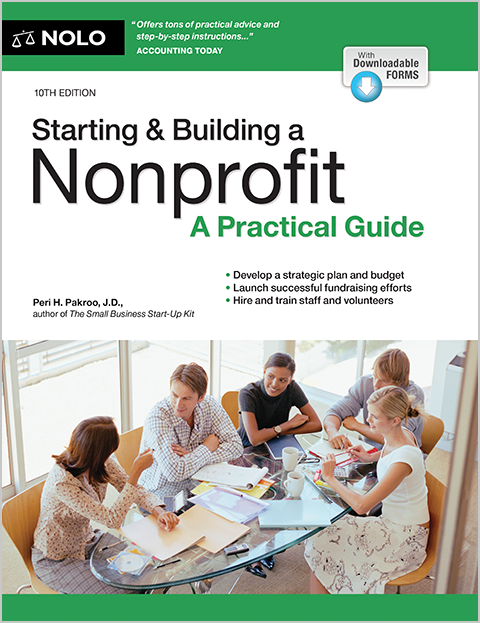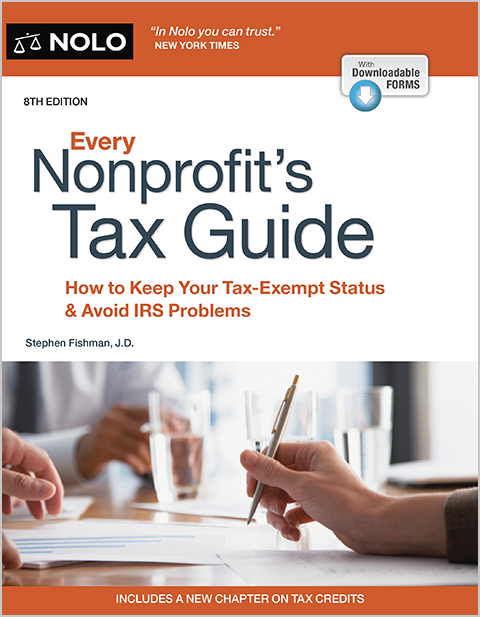In a formal membership nonprofit, the members have control over the direction of the organization.
Your nonprofit organization can have formal members or not, depending on how broadly you want to spread responsibilities and rights. In a membership nonprofit, voting members might appoint the board of directors, remove a director, change the bylaws, or dissolve the nonprofit. Certain services of the organization might be available only to the members, such as access to a retirement program or listing in a membership directory. By contrast, in a nonmembership nonprofit, the board of directors typically takes the above actions.
Whether to structure your nonprofit with members will depend on many factors, such as the size of your organization, its mission, and your appetite for complexity. The sections below explore these issues. We also discuss a middle ground, attractive to many organizations.
Nonprofit Organizations That Are Typically Non-Membership and Membership
Many nonprofits are public charities, which further a charitable cause such as an educational, religious, or scientific pursuit. Because of the difficulties in creating and managing membership nonprofits (discussed below), and because charities serve the general public instead of a limited number of members, public charities are commonly nonmembership organizations.
Conversely, organizations that serve a limited number of people are likely to be membership organizations, such as:
- social and recreational clubs, such as country clubs or fraternities
- civic leagues and neighborhood associations
- business leagues and chambers of commerce
- teachers' retirement fund associations
- labor organizations, and
- veterans' organizations.
Pros and Cons of Membership Nonprofits
Whether it's to your advantage to have members will depend on several factors, such as the following:
- Your need for capital investments. Organizations that admit members explicitly encourage financial contributions and involvement from each member. Nonmember organizations rely more on donations from the general public, which requires the organization's staff to continually solicit donations and come up with new fundraising strategies.
- Your willingness to deal with complexity. A roster of voting members spells complexity—you will need to organize, woo, and count those votes, making it more difficult to make changes than if you were dealing with just a board of directors.
- Your willingness to risk losing control. Once you give members a vote, you've created the possibility that they will take the organization in a different direction than the founders intended. With a nonmembership nonprofit, however, the founders can maintain control by serving on the board of directors and recruiting other directors who agree with the mission and direction of the organization.
Informal Membership Nonprofit Corporations
The great divide in the nonprofit world is members or not, but there's a third way to run your nonprofit that borrows the term "member" for marketing and fundraising purposes. These nonprofit corporations have "members," but they're not official membership corporations like the ones we've been discussing. The informal members have no decision-making power within the organization (unless they serve on the board of directors).
For instance, you might have heard Public Broadcasting pledge drives asking for members to join and donate to the station. Using "membership" as a way to raise money allows people or businesses to make monthly or annual donations in exchange for services like an insider newsletter or invitations to member-only events. And giving a donor the right to proudly claim and display "membership status" (on a tote bag, for example) can be a powerful donation motivator. Setting up an informal membership system does not require additional legal filings.
Qualifications and Classes of Members
The organization's bylaws specify the qualifications and the rights of members. Often, members must pay dues or commit to working a minimum number of hours. The nonprofit might set other qualifications, such as a limiting membership to certain professionals within a particular geographic location (such as the dentists of Albuquerque).
You may set different classes of membership, each with different qualifications, privileges, and obligations. You can make your membership structure as simple or as complicated as you want. A complicated structure might have different tiers of membership based on donations and provide the higher tiers with more services and number of votes.
How to Create a Membership Nonprofit
In your nonprofit formation documents that you file with the state, such as the Articles of Organization, you must indicate whether your nonprofit will have voting members. Some states require you to provide details about your membership structure, such as classes of membership and qualifications.
You will outline the membership structure in your bylaws, which are the internal rules for the management of your nonprofit. In your bylaws, address the following:
- membership qualifications
- duration of membership
- classes of membership
- numbers of members (minimum and/or maximum)
- voting rights (one vote per member, or another arrangement)
- the month of the annual meeting (when the members meet to review the organization's year and make major decisions for the nonprofit)
- quorum requirements (minimum number of members that must be present at meetings to make decisions)
- rules for proxy voting (allowing members to delegate their vote to a representative), and
- notice requirements for meetings.
Membership Nonprofits Might Have to Pay Taxes on Dues
A nonprofit that meets the state and federal requirements may apply for "tax-exempt" status, meaning it will not pay certain taxes, including corporate and sales tax. Without exempt status, the nonprofit pays the same taxes as a for-profit company.
Exempt status applies only to income that relates to the nonprofit's mission. The IRS treats other income as "unrelated business income," which is subject to corporate and/or sales tax. In some cases, membership dues are unrelated business income. For example, if an animal rights organization provides its paying members with free advertising in its newsletter, because advertising is unrelated to animal rights, the organization likely would be responsible for paying taxes on those membership dues.



